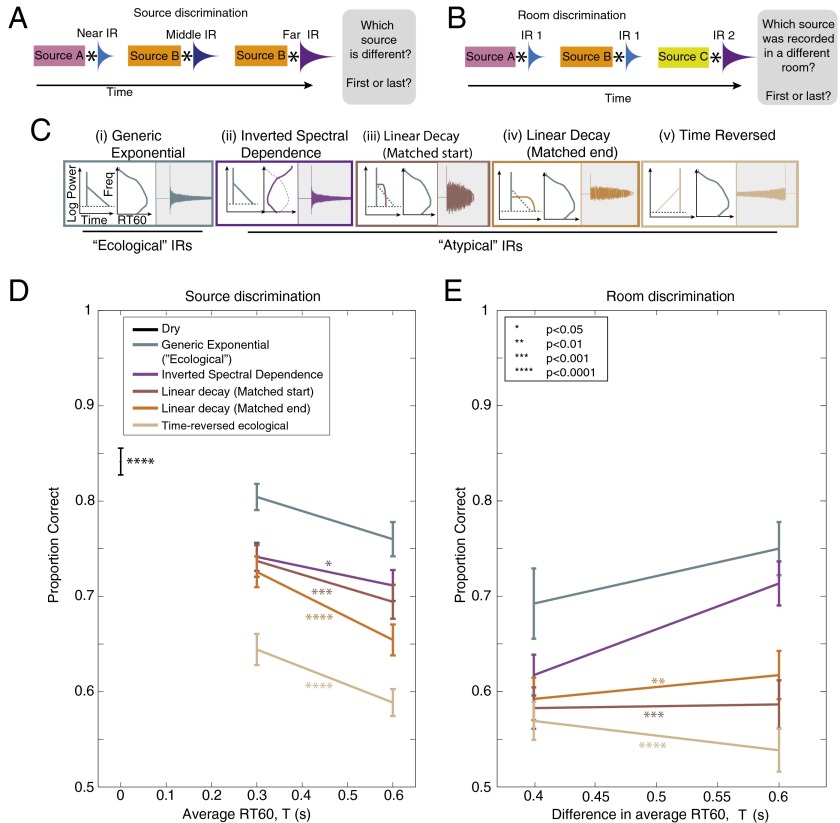Fig. 7.
Perceptual separation of source and IR (experiments 2 and 3). (A) Schematic of trial structure for experiment 2 (discrimination of sources in reverberation). Three sounds were played in succession, separated by silent intervals. Each sound was generated by convolving a source signal (modulated noise) with a different IR. The IRs were all a particular type of synthetic variant and had the same RT60 but differed in DRR (simulating different distances of the source from the listener). Listeners judged which of the three sources was different from the other two. (B) Schematic of trial structure for experiment 3 (discrimination of IRs in reverberant sound). Three sounds were played in succession, separated by silent intervals. Each sound was generated by convolving a source signal (modulated noise) with an IR. The IRs were all a particular type of synthetic variant. Two of them were identical and the third one had a longer RT60 (simulating a larger room). Listeners judged which of the three sources was recorded in a different room. (C) IR variants used to probe the effect of reverberation characteristics on perceptual separation. All IRs of a given RT60 and DRR introduced equivalent distortion in the cochleagram. (D) Source discrimination performance (proportion correct) as a function of IR decay time for different synthetic IR classes. Here, and in E, error bars denote SEMs and asterisks denote significance of difference between average performance in each condition and that of the generic exponential condition. (E) IR discrimination performance (proportion correct) as a function of the IR decay time for different synthetic IR classes.

